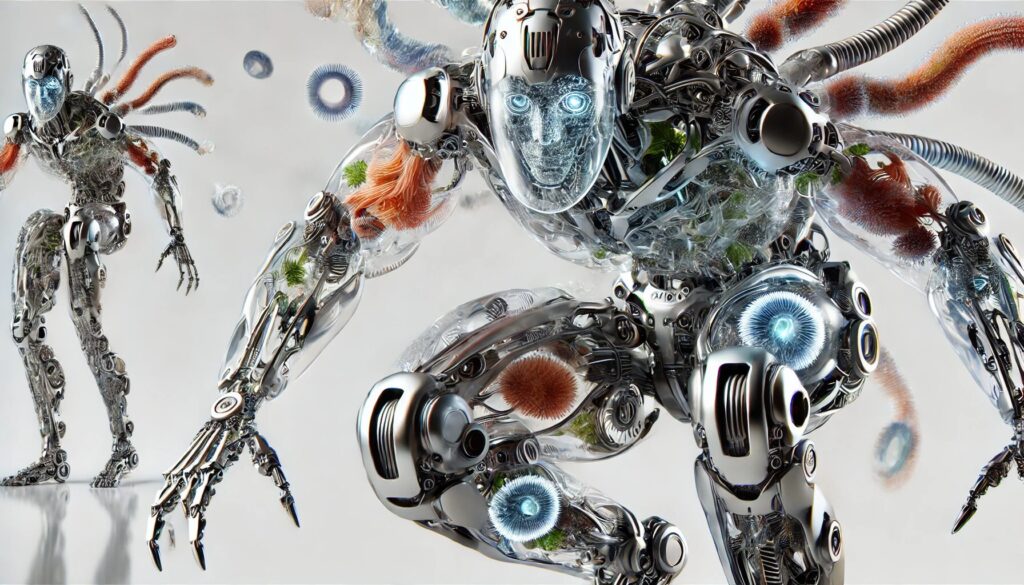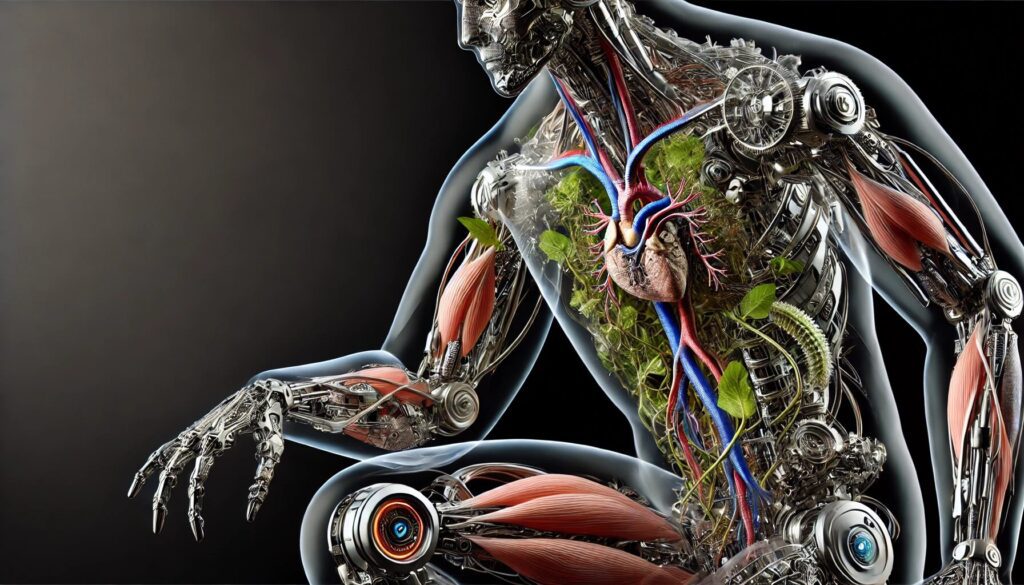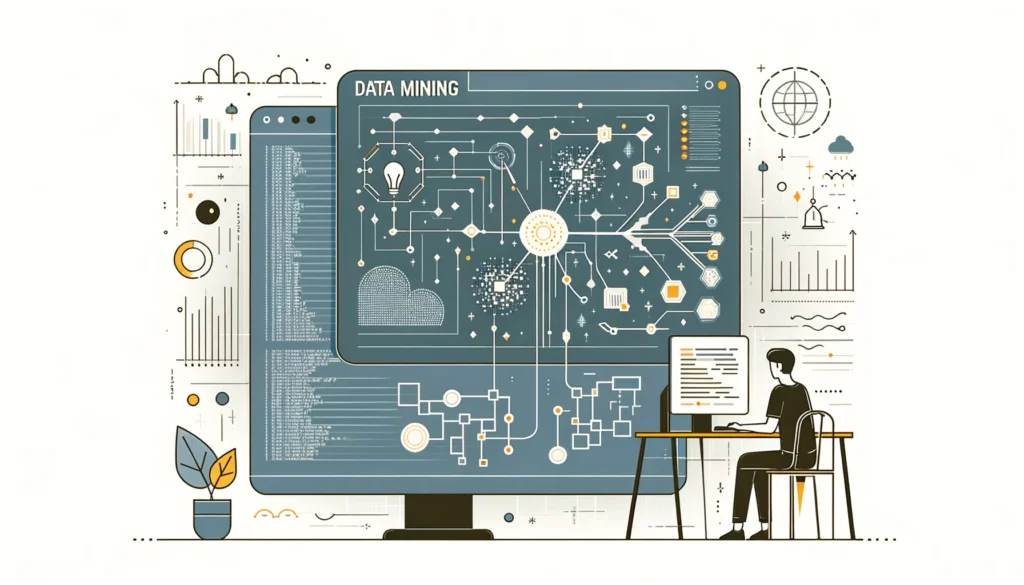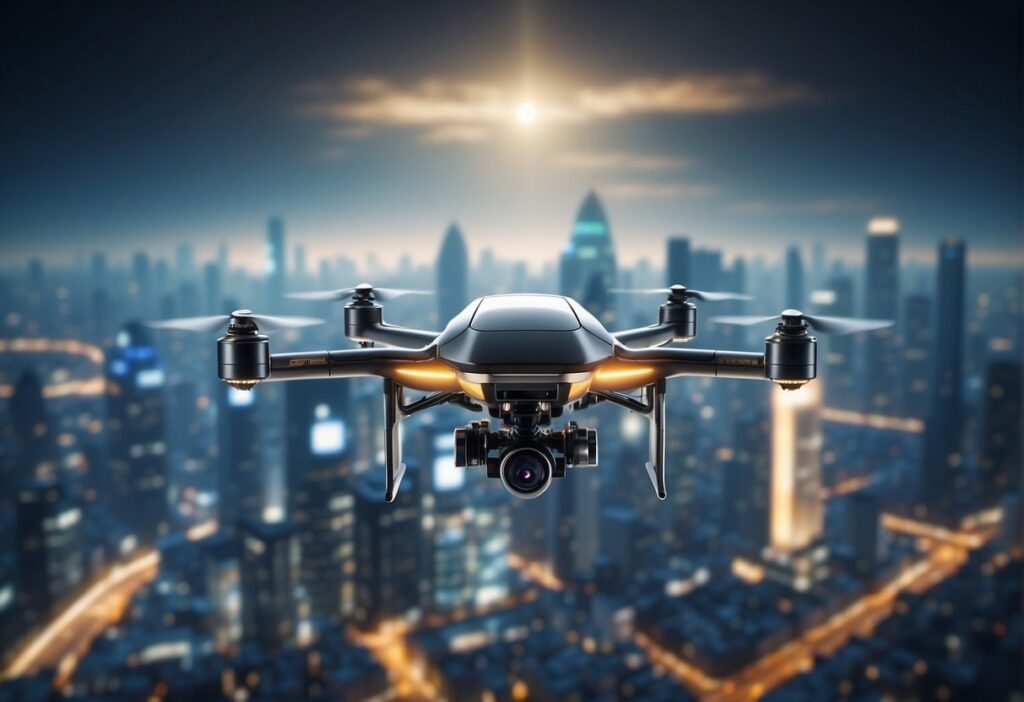
What Are Biohybrid Robots and Why Should You Care?
Imagine a world where machines are no longer just cold, metal objects, but rather a seamless blend of biology and technology. That’s where biohybrid robots come in. These fascinating creations are built by integrating living muscle cells with mechanical systems, bringing us closer to a future that combines the best of both worlds. But why should you care? For one, this innovation could change how we interact with robots—making them more adaptable, responsive, and in tune with the natural world.
Biohybrid robots are not just the stuff of sci-fi movies anymore. They represent a monumental leap in biotechnology and robotics, holding potential in areas as diverse as healthcare, environmental protection, and even space exploration. This new frontier pushes the boundaries of what’s possible, blending biology and engineering to create machines that move and behave more like living organisms. Sounds wild, right? It’s closer than you think.
The Science Behind Biohybrid Technology
To truly appreciate biohybrid robots, you need to understand the science that powers them. It all starts with biocompatibility—the idea that living tissues can function in harmony with mechanical components. Engineers use living muscle cells, often from animals like rats, to create these robots. These cells are carefully placed on flexible, mechanical frameworks, allowing the robot to move in a way that mimics the muscle contractions in our bodies.
At the core of these machines is the principle of biomechanics. Unlike traditional robots that rely on motors, biohybrid robots depend on the natural properties of muscle cells to generate movement. This makes them more flexible and adaptable to their environment. Advances in bioengineering allow scientists to cultivate muscle tissues that can contract on command when exposed to stimuli like electrical impulses. Pretty cool, huh?
From Fiction to Reality: Early Advances in Biohybrid Robots
The journey of biohybrid robotics feels like a plot from a futuristic novel. But the truth is, we’re already seeing real-world progress. Researchers have successfully developed small, soft robots powered by muscle tissues. These robots may look simple now, but they mark the beginning of something much bigger. One of the first breakthroughs came when scientists created a tiny swimming robot, designed with muscle cells that contract to move through water.
Though we’re not quite at the stage of full-fledged, human-sized biohybrid machines, these early versions showcase the enormous potential for future applications. Imagine robots that can mimic the way humans or animals move—capable of squeezing through tight spaces or performing delicate tasks with the agility that machines have previously lacked. The future is bright, and biohybrids are just starting to stretch their muscles.
How Living Muscle Cells Power These Machines

So how exactly do living muscle cells power a robot? It’s not magic, although it may feel like it! These cells, called myocytes, are specially cultured in a lab environment to function within a mechanical framework. When an electrical signal is applied, the cells contract, just like they do in human muscles, generating the necessary force to make the robot move.
The most exciting part is how precise and controlled these movements can be. Unlike conventional robots that move in a rigid, pre-programmed way, biohybrids are more fluid and organic. They can respond to their environment in real time, adjusting their movements based on external stimuli like temperature, pressure, or electrical signals. This is a game-changer for robotics, opening up possibilities for softer, more adaptable machines that can perform complex tasks with the grace of living organisms.
Benefits of Integrating Biology and Robotics
Now you might be wondering—what’s the point of merging living tissue with machines? The benefits of biohybrid robots are numerous and far-reaching. For one, they are more energy-efficient than traditional robots, thanks to the use of biological processes. Muscle cells, for instance, are capable of converting energy into movement in a much more efficient way than motors and batteries.
Another advantage is flexibility. These robots can change their shape and movement style to adapt to different environments, making them ideal for tasks that require a delicate touch or the ability to fit into tight spaces. Additionally, biohybrids have the potential to self-heal, using the same mechanisms living organisms use to repair damaged tissue—something no traditional robot can achieve.
Challenges Facing Biohybrid Robot Development
Despite the excitement surrounding biohybrid robots, there are still some significant challenges to overcome. One major hurdle is the complexity of growing and controlling living tissues. While we’ve made great strides in harnessing the power of muscle cells, keeping them alive and functioning within a machine is no small feat. Cells need nourishment, the right environmental conditions, and continuous maintenance to ensure they work effectively within the robot’s framework.
Another challenge is scalability. Sure, we’ve created small biohybrid robots, but how do we go from tiny, simple structures to larger, more complex machines? The answer lies in tissue engineering, a field that is evolving but still has limitations. Scientists are working on ways to grow more robust and longer-lasting muscle cells that can withstand the mechanical stresses robots are likely to face.
Lastly, control is a sticking point. While electrical impulses can activate muscle cells, fine-tuning these movements to perform specific tasks remains difficult. Robotics developers are looking for ways to improve the precision and reliability of these controls, but for now, the journey toward fully functional biohybrid robots is still a work in progress.
Ethical Concerns Surrounding Biohybrid Robots
The idea of integrating living cells with machines also raises ethical questions. Should we be manipulating biological systems to create robots, or are we crossing a line? One of the primary concerns is the use of animal cells. Even though the robots themselves aren’t sentient, the ethical debate over using living tissues from animals is ongoing. Some fear that biohybrid robots could lead to more invasive uses of biology, especially if we start considering human muscle cells as a future resource.
There’s also the question of unintended consequences. Could biohybrid robots somehow evolve beyond our control? While that might sound like a far-fetched fear, it’s not entirely out of the realm of possibility. As we blend biological systems with mechanical frameworks, there’s always a risk of unforeseen complications. It’s important that scientists, ethicists, and policymakers work together to ensure that biohybrid technology is developed responsibly and thoughtfully.
Revolutionary Applications of Biohybrid Robotics
Despite the challenges, the potential applications of biohybrid robots are nothing short of revolutionary. One of the most promising areas is medicine. Imagine tiny robots made from living muscle that can move through the bloodstream, delivering medication to a specific site, or performing delicate surgical tasks. These machines could perform tasks within the human body that are impossible for today’s technology, making them a game-changer in minimally invasive procedures.
Beyond medicine, biohybrid robots could also play a key role in environmental clean-up efforts. Imagine soft, biodegradable robots that can swim through oceans, collecting plastic waste, or crawling through soil to monitor pollution levels. Because these robots use living cells, they could be more adaptable and energy-efficient than traditional machines, capable of operating in challenging environments where conventional robots struggle.
Biohybrids in Medicine: Healing and Repairing the Body
In the world of healthcare, biohybrid robots have the potential to reshape how we treat diseases and injuries. Their ability to move through tight spaces and react to real-time stimuli makes them ideal for targeted drug delivery, where precision is key. Unlike current methods that flood the body with medication, biohybrid robots could carry small doses directly to affected areas, reducing side effects and increasing effectiveness.
Another exciting application is in tissue regeneration. Imagine biohybrid robots made from stem cells that can help regrow damaged tissues or repair injuries from within the body. For example, after a heart attack, muscle cells in the heart are damaged, and biohybrid robots could potentially repair or replace those damaged cells, helping patients recover faster and more completely. This could revolutionize treatments for conditions that were once considered untreatable.
Environmental Impacts: A Greener Future with Biohybrids?
When it comes to the environment, biohybrid robots could offer a more sustainable, eco-friendly alternative to traditional machines. Traditional robots are often made from metals, plastics, and other materials that are not biodegradable, leading to waste and pollution. Biohybrid systems, however, could be created from organic materials that degrade naturally over time, reducing their environmental footprint.
Moreover, these robots could be powered by biological processes, meaning they might need fewer batteries or external energy sources. Think about a future where biohybrids patrol forests to monitor wildlife or help clean up oil spills, all without contributing to the very pollution they aim to reduce. This green approach to robotics could pave the way for machines that work in harmony with nature rather than against it.
The Role of Stem Cells in Biohybrid Robotics
Stem cells play a pivotal role in the development of biohybrid robots. These cells, known for their ability to develop into various types of tissues, are essential for growing the living muscle that powers these machines. Scientists can guide stem cells to differentiate into myocytes—the muscle cells that are used to create movement. The beauty of stem cells lies in their versatility. Not only can they be coaxed into forming muscle, but they could potentially be used to develop other tissues, such as neurons, to create even more complex biohybrid systems.
Another exciting prospect is self-healing. Since stem cells are naturally programmed to regenerate and repair tissues, biohybrid robots created with stem cells could, in theory, repair their own muscle damage over time. Imagine a robot capable of recovering from injuries, much like living organisms do. This could extend the lifespan of biohybrid machines and make them more durable in environments where damage is likely, such as disaster recovery zones or space exploration.
Will Biohybrid Robots Redefine Human-Technology Interaction?
With biohybrid robots emerging, the way we interact with technology is about to take a huge leap forward. These machines, powered by living tissues, can respond in ways traditional robots cannot, offering the possibility of more natural, intuitive interactions. Think about robots that can learn and adapt to your personal needs, whether in your home or workplace. A biohybrid robot could have the flexibility to move like a human and perform tasks with the same sensitivity as a living organism, allowing for smoother cooperation between humans and machines.
Imagine a world where biohybrid robots could take care of daily chores in a more seamless, almost invisible way—like a robotic hand that delicately picks up fragile objects or performs tasks in dynamic environments. This new breed of robots could be so finely tuned to human activity that they become less noticeable, blending into our daily lives in a way that mechanical, metal-clad machines never could.
Comparing Biohybrids to Traditional Robots: What’s the Difference?
At first glance, it might seem like biohybrid robots and traditional robots serve the same purpose—helping humans perform tasks. But the differences between them are profound. Traditional robots, made from rigid materials and powered by motors, rely on pre-programmed movements. They excel in environments where tasks are repetitive and don’t require much adaptability, such as in manufacturing or assembly lines.
Biohybrids, on the other hand, are softer and more flexible. Their movements are powered by biological tissues, which allows them to adapt to changing environments in a way that traditional robots cannot. For instance, while a standard robot might struggle to navigate uneven terrain or delicate objects, biohybrids could adjust their movements in real time, reacting like a living organism to external stimuli. This adaptability makes them well-suited for more complex tasks that require a delicate touch or interaction with unpredictable environments.
In short, while traditional robots offer strength and precision, biohybrids bring flexibility and a more organic form of control, making them better suited for tasks that demand nuanced, responsive action.
Looking Ahead: What’s Next for Biohybrid Technology?
The potential for biohybrid robotics is still in its early stages, but the future holds many exciting possibilities. One area of active research is creating more complex muscle structures that mimic the full range of movement seen in animals—and eventually humans. If scientists can achieve this, we could see robots with movement capabilities that are almost indistinguishable from living organisms.
Further ahead, the integration of neurons into biohybrid robots could enable them to process information in real time, perhaps even allowing for basic decision-making without the need for an external control system. Imagine a robot that can not only react to its environment but make decisions on how to best complete its tasks—without human intervention. This could revolutionize fields like autonomous exploration or deep-sea research, where real-time adaptability is crucial.
Of course, this opens up even more questions about control and autonomy. How much independence should a biohybrid robot have? Can we trust them to act in ways that benefit humanity? These questions, while speculative now, will likely need to be addressed as the technology continues to evolve.
Potential Risks: Could Biohybrid Robots Backfire?
As with any groundbreaking technology, there are potential risks associated with biohybrid robots. One concern is their ability to evolve in unpredictable ways. Since these robots are powered by living cells, there’s a chance that their biological components could behave unexpectedly, especially as they interact with their environment over time. Could these machines develop new traits that we didn’t foresee? While that sounds like the plot of a science fiction movie, it’s not entirely out of the question.
Another potential risk lies in cybersecurity. Traditional robots, though vulnerable to hacking, operate on clear, predictable algorithms. Biohybrid robots, with their biological components, could be harder to control in the same way. How do you safeguard a machine that uses both biology and software to function? This is a challenge that researchers will need to address as biohybrid robots become more advanced.
Finally, there’s the question of biological contamination. Could these machines introduce new, uncontrolled biological materials into environments where they operate? While safeguards will certainly be put in place, it’s a possibility that must be considered carefully as the technology develops further.
Collaboration Across Disciplines: Engineers and Biologists Unite
One of the most fascinating aspects of biohybrid robotics is the way it brings together experts from different fields. Engineers and biologists, once operating in largely separate realms, are now working side by side to develop these machines. The knowledge from both fields is crucial—biologists understand how living tissues function, while engineers design the mechanical frameworks that allow these tissues to interact with machines.
This type of interdisciplinary collaboration is key to the future success of biohybrid robots. The blending of biotechnology and robotics will push both fields forward, as innovations in one area feed into advances in the other. Researchers are not just building better robots—they’re learning more about how living tissues function and interact with technology, which could have ripple effects across a variety of industries.
With each new breakthrough, the boundaries between biology and engineering blur further, creating a fascinating new frontier for both fields to explore.
How Close Are We to Seeing Biohybrid Robots in Daily Life?
While biohybrid robots are making headlines in laboratories, they’re not quite ready to make their debut in everyday life. The technology is still in its infancy, with most current biohybrids being small-scale, proof-of-concept machines. For now, these robots are primarily used for research and development, testing their potential in controlled environments.
However, we’re getting closer. As researchers make strides in tissue engineering and improve the integration of living cells with mechanical frameworks, we can expect biohybrid robots to slowly transition from labs to real-world applications. Some scientists predict that within the next decade, we may start seeing biohybrid robots in healthcare and environmental roles. Tasks like delivering medication, cleaning polluted areas, or even performing surgeries could soon be handled by these living machines.
But for them to become a regular part of daily life, there’s still work to be done in areas like scalability, durability, and control mechanisms. As researchers refine these aspects, the dream of seeing biohybrid robots walking, crawling, and swimming around us is becoming more realistic. And who knows? In the near future, your new assistant or co-worker might be a biohybrid robot, quietly helping you out in ways you never imagined.
This is where biohybrid robots stand today—on the cusp of transforming industries, reshaping medical treatments, and potentially improving our environment. The future is close, but the journey to integrating living cells with machines will take time, precision, and collaboration across science and technology fields. Yet with every tiny step forward, we are closer to witnessing machines that bridge the gap between the organic and the mechanical. It’s an exciting frontier, and we’re just getting started.
Resources:
- Nature Biotechnology – A leading journal that publishes cutting-edge research on biohybrid robots and biotechnology developments. www.nature.com/nbt
- Frontiers in Robotics and AI – Provides open-access articles on the latest advancements in robotics, including biohybrid systems. www.frontiersin.org/journals/robotics-and-ai
- IEEE Xplore Digital Library – Offers scientific papers and research studies on biohybrid robotics, muscle-cell integration, and other robotics technologies. ieeexplore.ieee.org





